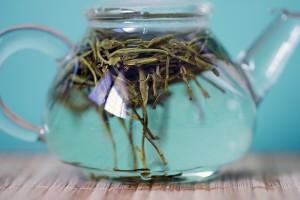Grant Hill
A few months ago, Grant Hill hung up his boots and called it a career.
Any way you looked at it, “illustrious” is an apt description of all he achieved in the realm of basketball, be it NCAA, Olympics or the NBA.
Joint Rookie of the Year, 7 times all-star, 5 times all-NBA team, twice NCAA champion and an Olympics gold medalist in 1996, most NBA players would kill to have a resume like that.
But for many NBA fans like me, Grant Hill’s career could have been more.

Image taken from WikiCommons
As one of the first of the many “the-next-Jordan” to emerge, Grant Hill certainly presented a compelling case.
Averaging 21.6 points, 7.9 rebounds and 6.3 assists per game and routinely defending the opposing team’s best wing player, there are few all-around talents in the NBA like him.
At 6 foot 8 tall, he could handle the ball like a point-guard and had court vision to boot. Coming from the famed Duke University NCAA team, coached by the legendary Mike K, Hill had a leg up on most of his peers.
But for all his talents, 2 accolades eluded him- NBA Champion and NBA Finals MVP.
One word sums it up- injuries.
From 2000 to 2006, Hill played in less than 40% of regular season games and spent most of the time in rehab at the age he was supposed to be peaking.
What’s the Relevance?
If I still haven’t lost your attention- this is a tea site after all- Grant Hill’s story reminds me a lot of Huangshan Maofeng.
Like Hill, Huangshan Maofeng had a leg up on most of its peers.
The Huangshan area and its surroundings- Xiuning and Laozhu- were influential in shaping modern wok-roasted green tea.
Huangshan itself is a UNESCO heritage site and probably one of the best known natural scenic areas in China. It is also a perfect natural habitat for the Camellia sinensis (tea) plant with its high elevation, climate, ample rainfall and natural spring water.
The Huangshan Dayezhong is high in amino acid which gives tea a brisk sweetness that is especially favored in green tea.
But…….
Like Grant Hill, Huangshan Maofeng didn’t quite realize its potential.
Huangshan Maofeng is commonly regarded as the 3rd best known Chinese green tea- behind Xihu Longjing and Dongting Biluochun. Not too shabby considering there hundreds of green tea varieties in China.
Except the gap is really huge and you could make a case for several other varieties overtaking Huangshan Maofeng in terms of repute and value such as Lushan Yunwu, Xinyang Maojian and Taiping Houkui, just to name a few.
To Add Insult to Injury…..
In the 1860s, when Huangshan native, Xie Zheng An (谢正安) first brought his Huangshan teas to the thriving Shanghai tea markets to sell, he was met with a lukewarm response.

To innovate and differentiate, Xie abandoned the traditional Huangshan methods and dried the leaves in a baking cake instead of a wok.
Ironic that the region which first discovered wok-roasting had to innovate to survive.
Nevertheless
Like Grant Hill though, Huangshan Maofeng still have most of its peers looking up at it.
With the increasing popularity of Huangshan and resurgence in the tea industry there, we can look at better days ahead for Huangshan Maofeng.
Happily for it, unlike Grant Hill, Huangshan Maofeng still doesn’t need to call it a career and there is still an opportunity for a comeback.
See Huangshan Maofeng in stores now
See other articles related to different varieties of green tea here
